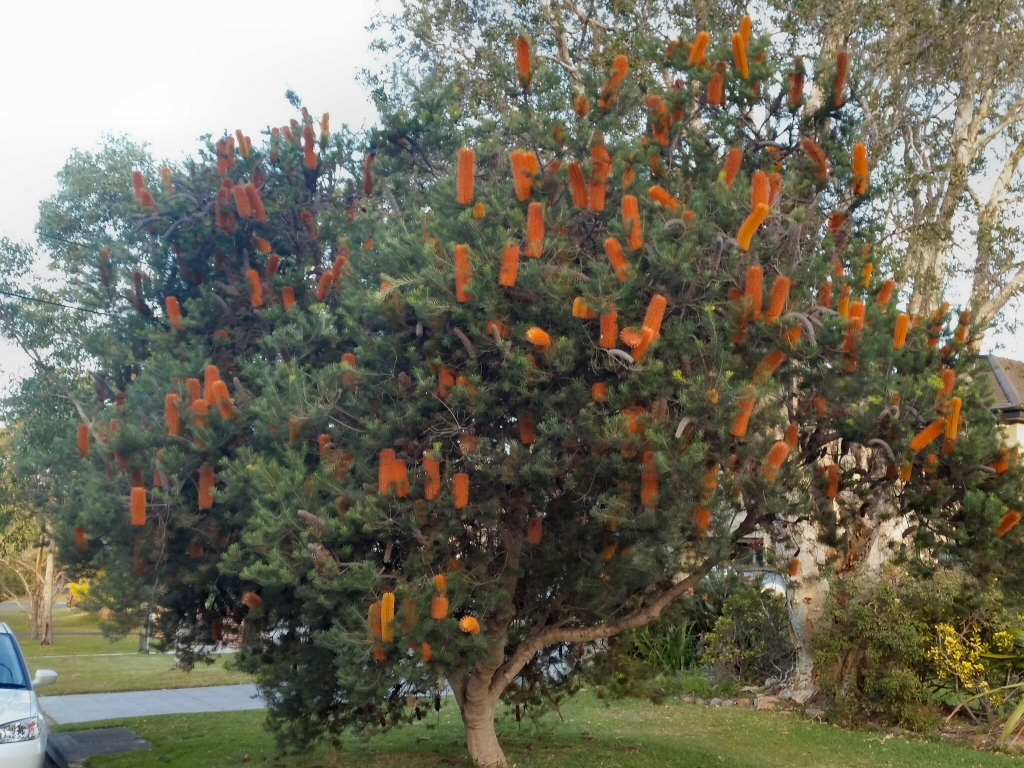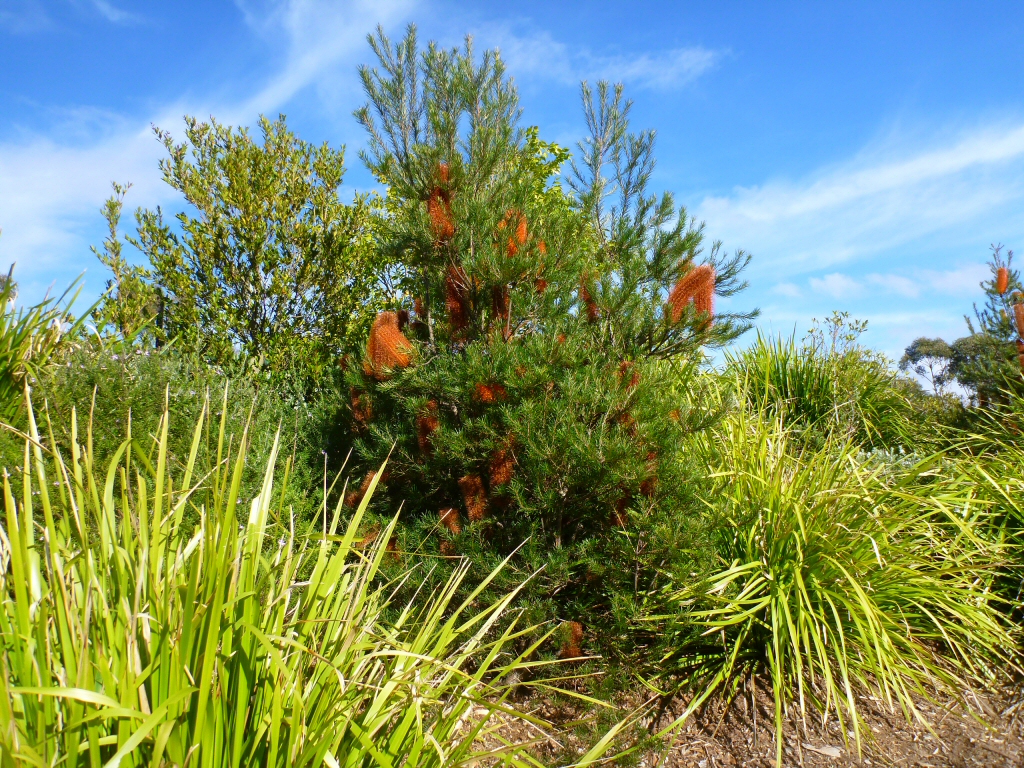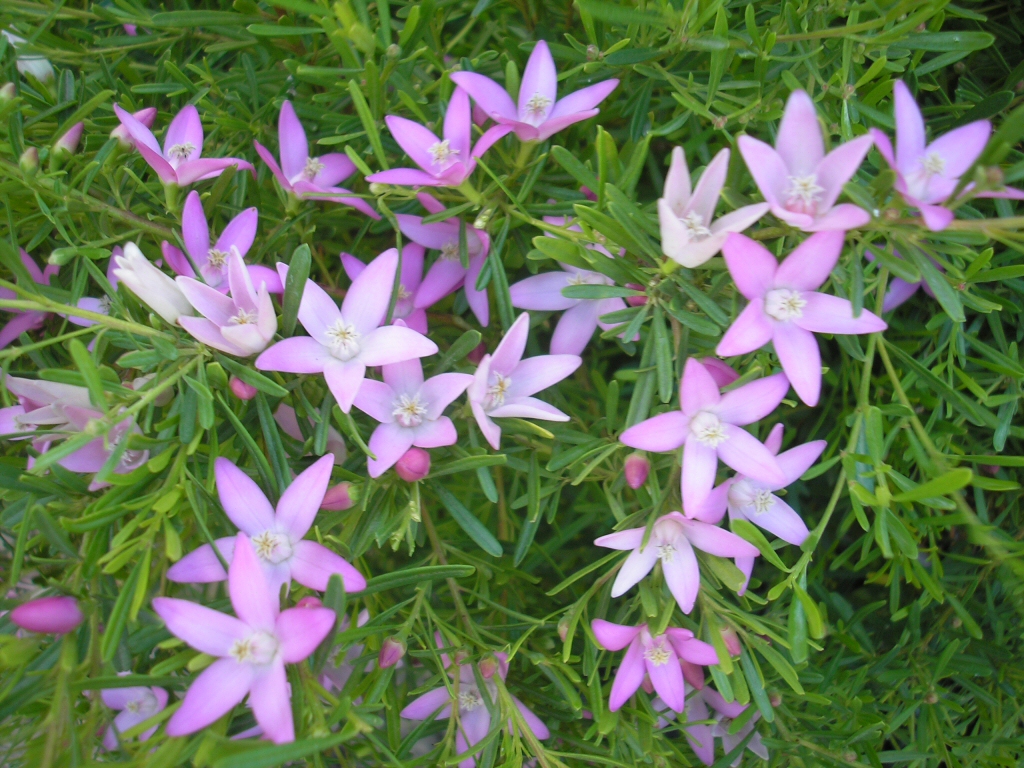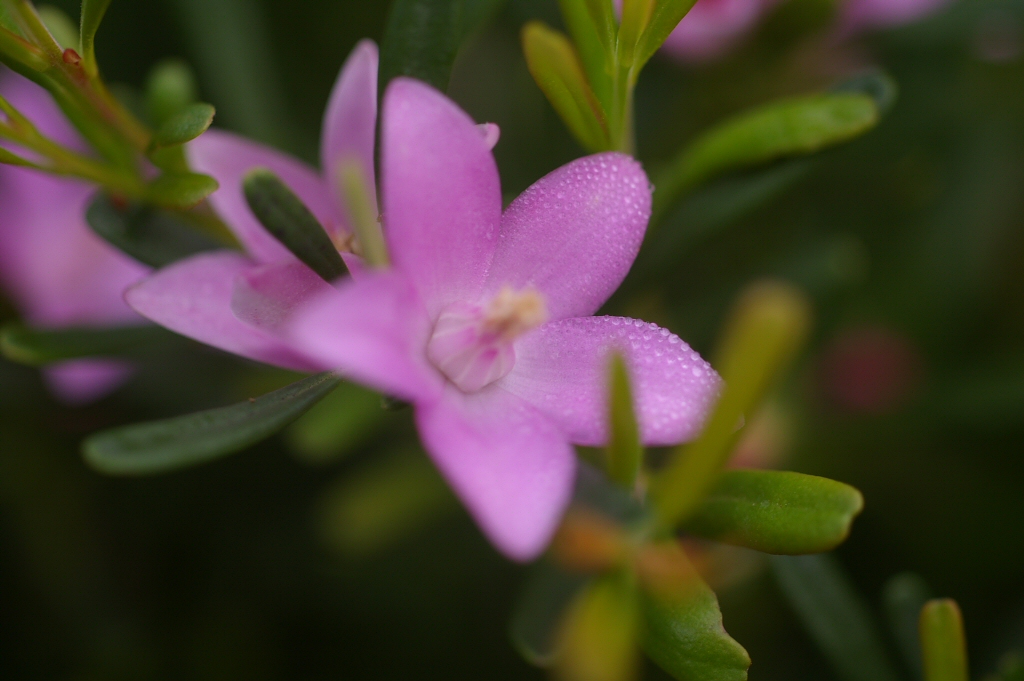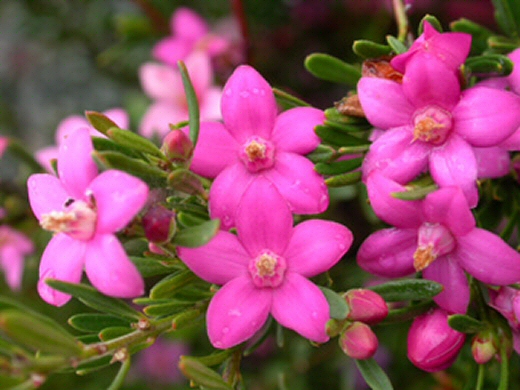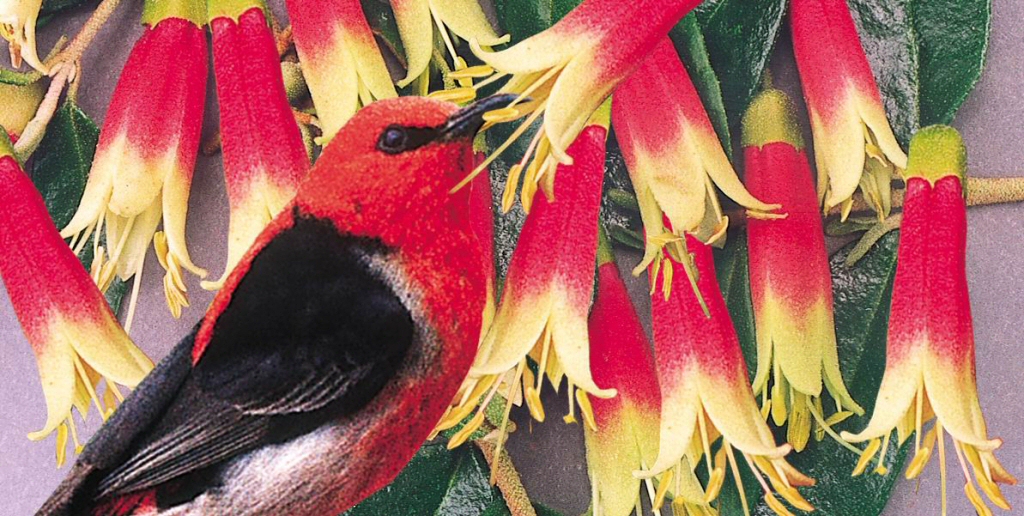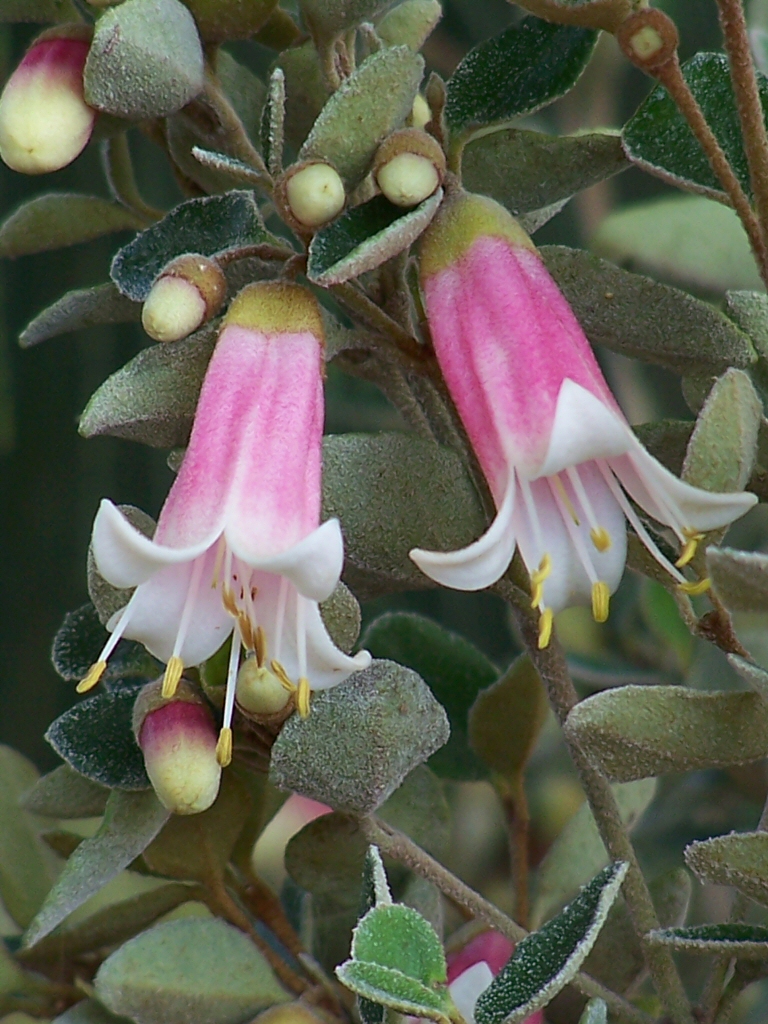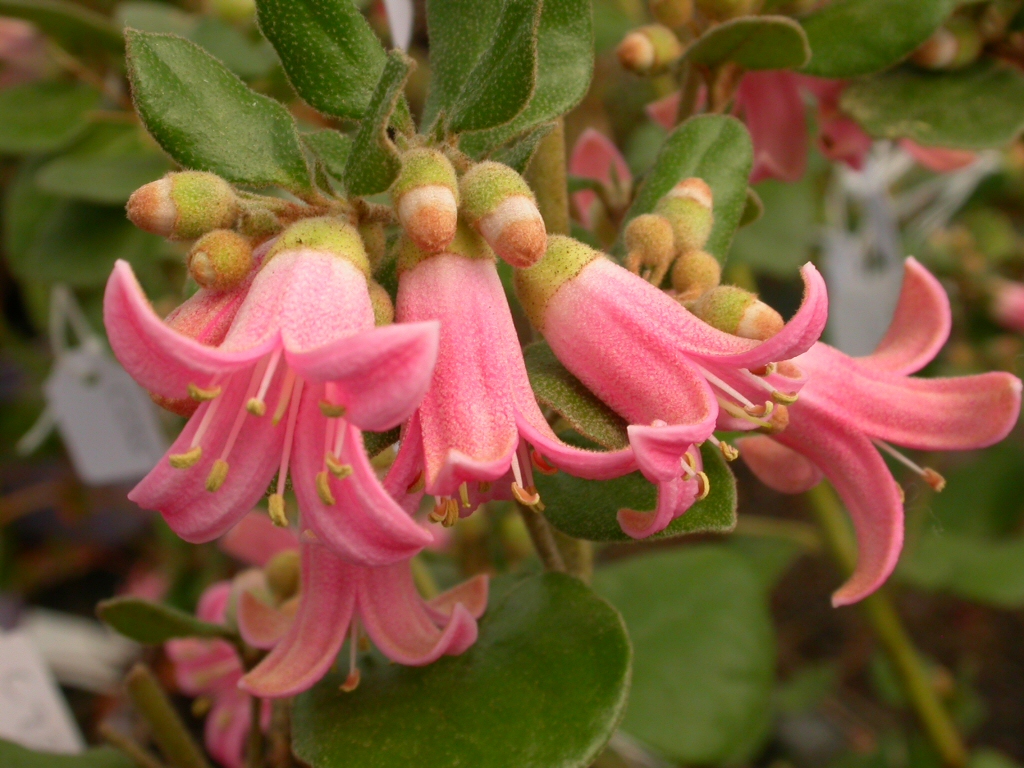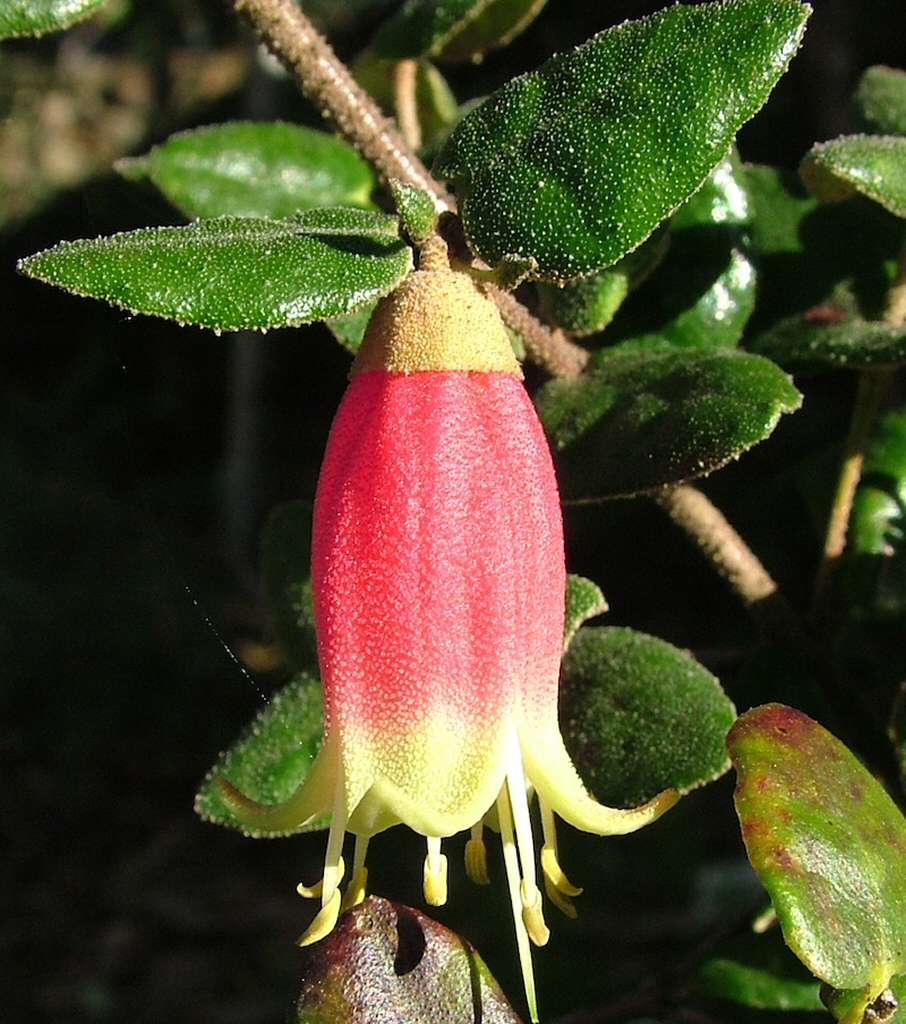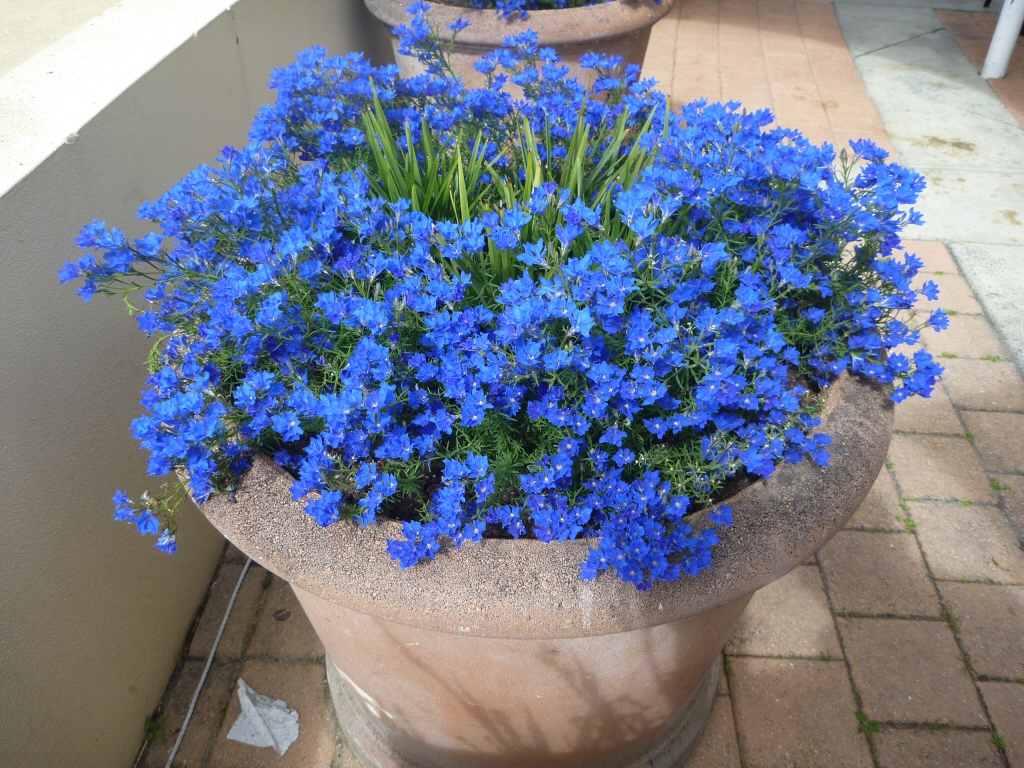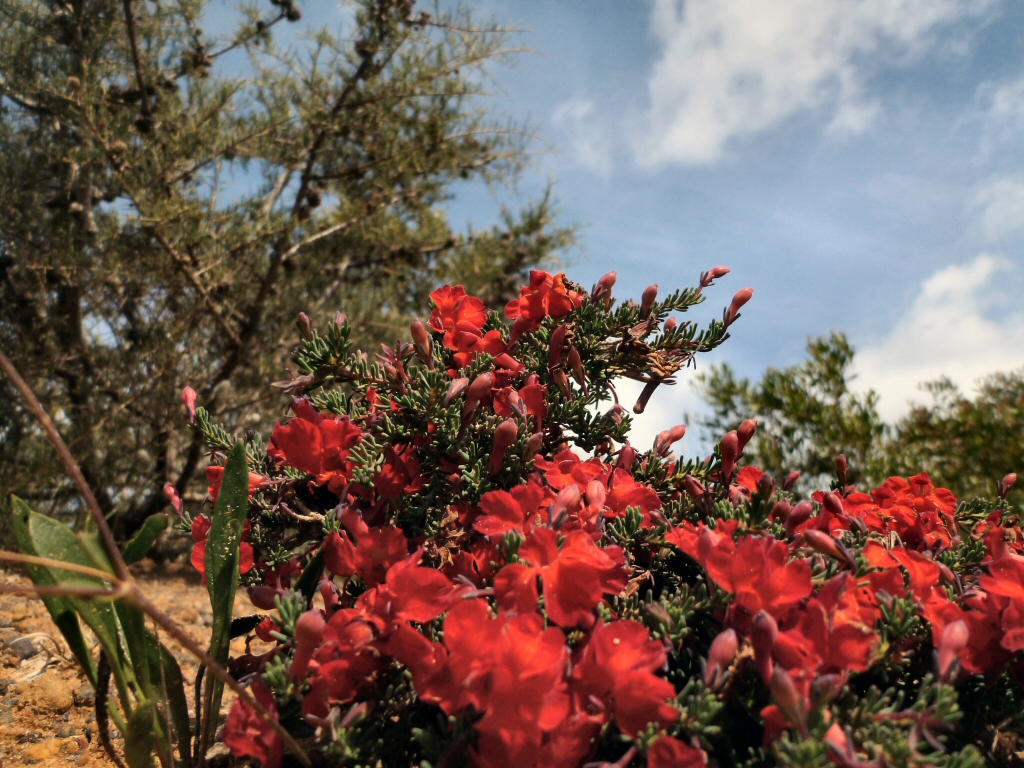There are a host of wonderful low growing natives that can add a splash of colour to even the smallest garden in the dead of winter. Almost all native plants are evergreen which means they tend to keep growing all year round and clearly many have found an evolutionary advantage to blooming in what is normally a quiet time of year for flowering plants.
Dwarf banksias
One of the fabulous new developments in recent times has been the selection of a range of compact banksias that are tailor-made for pot culture in courtyards and patios. Most of these new banksias have been found in coastal areas where the windswept landscape prunes them into tight buns, a characteristic that is genetically inherited in the new cultivars. Banksias are shrubs that perform best in full sun to part shade and will live for many years.
-

Banksia spinulosa 'Birthday Candles'
-
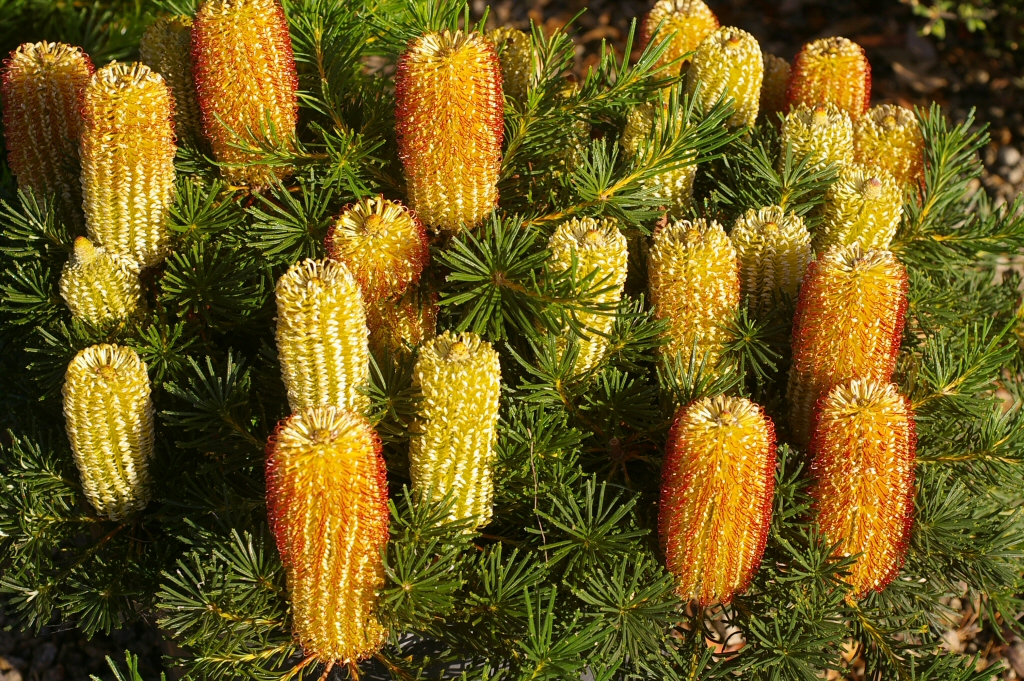
Banksia spinulosa 'Coastal Cushion'
-
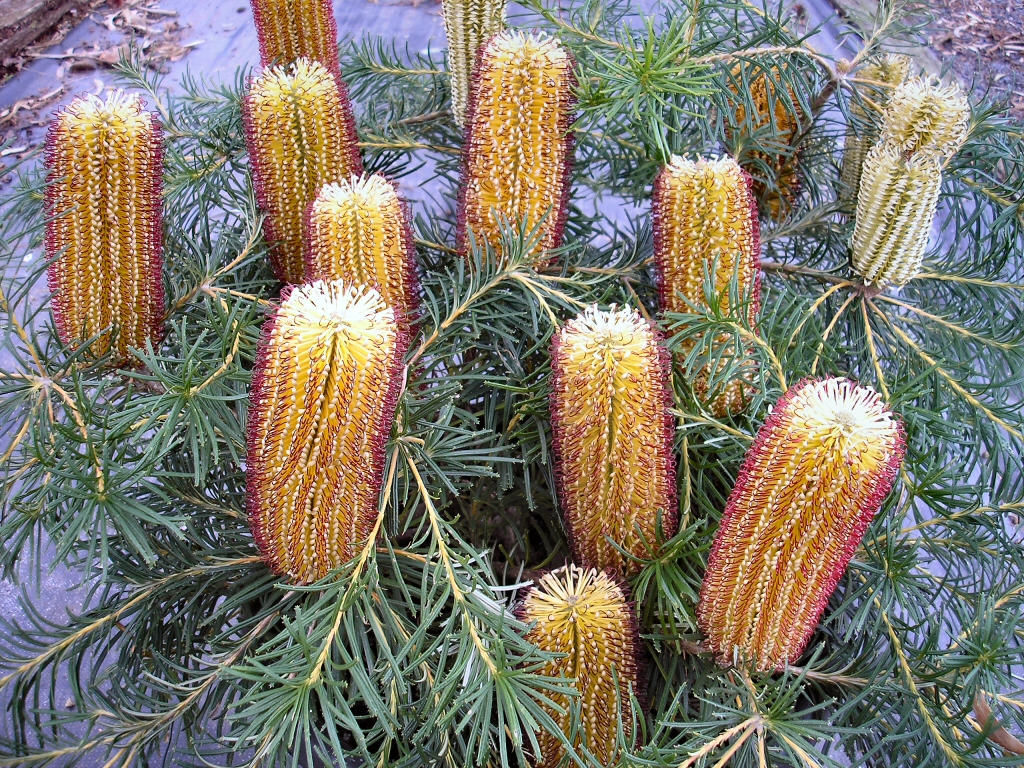
Banksia spinulosa 'Cherry Candles'
Banksia spinulosa ‘Birthday Candles’ is perhaps the best known of the new breed of banksias and has a bicoloured flower head with mauve styles contrasting nicely with the yellowish floral tube. Its nectar-filled blooms will attract various birds such as the delicate honeyeaters and spinebills. Apart from the removal of spent flower heads in spring there is virtually no maintenance required for this and other dwarf banksia cultivars.
Banksia spinulosa Honeypots has golden flowers and a similar compact habit to Birthday Candles. With all banksias it is important to keep phosphorus levels low and ensure a well drained growing medium to minimise the possibility of root rot. Iron deficiencies are also common and may result from soils that are too alkaline or are simply iron deficient. A dose of iron sulphate will generally alleviate this problem.
There is a host of other wonderful dwarf banksias available from a wide range of species so it is possible to find a species that will suit most climatic zones of Australia.
Taller Banksias for winter flowers
The spectacularly long orange flower spikes are the exciting feature of this reliable banksia. Reputedly a hybrid between Banksia ericifolia and the hairpin banksia (B. spinulosa), it grows into a medium sized shrub with closely spaced needle-like (but not spiky) foliage.
It thrives as far south as Melbourne but dislikes heavy frost and therefore will need a protected position in colder inland climates such as Canberra. It needs a relatively well drained soil, prefers a low phosphorus fertiliser and may need the occasional dose of iron chelates if the new growth starts to yellow.
Crowea and Correa
Crowea and Correa both belong to the Citrus family, Rutaceae which means they have interesting scented foliage which complements the striking autumn/winter floral displays.
Croweas have beautiful waxy star-like flowers that last particularly well on the plant as the petals hang on long after the flower has been pollinated. Bindelong Compact is a very low growing plant with masses of small pink flowers. Crowea Festival is a cultivar that has been around for many years and is a proven performer. Southern Star is a relatively new cultivar that has relatively fine dark green foliage that complements the bright pink flowers that continue for several months. Low Dome is a compact variety which naturally forms a domed bush.
A light haircut after flowering will help croweas to bush up during spring and summer, ensuring a spectacular flower display for the following season. A handful of slow release fertiliser at pruning time will greatly assist this process as well.
Correas are low growing shrubs that feature beautiful pendulous, bell-shaped flowers in a range of colours. The tubular flowers are designed for bird pollination, so you can expect regular visits from several species of nectar feeding birds while they are in flower. Correas are reliable growers that thrive in dappled light and will benefit from tip pruning while they are young. Correa Federation Bell is a spectacular new cultivar that has bicoloured red and green flowers that appear for several months through autumn and winter. Growing requirements and maintenance of correas is identical to that of the croweas, making these two genera ideal garden companions.
Lechenaultias
Lechenaultias are one of Australia’s most colourful plants, coming in a rainbow of almost fluorescent shades. They belong to the same family as the fan flowers (Scaevola) and have a similar ground covering to mounding habit that is ideal for container growing, especially hanging baskets. Coming from the sandy soils of south western Western Australia these plants are somewhat particular about growing conditions, requiring a freely draining medium and a low humidity in summer. Even though they are perennials, in the more humid climates of Australia it is perhaps best to consider them as annuals that will provide a riot of colour for many months. If and when they start to look untidy they can be readily propagated from tip cuttings to provide a fresh start.

